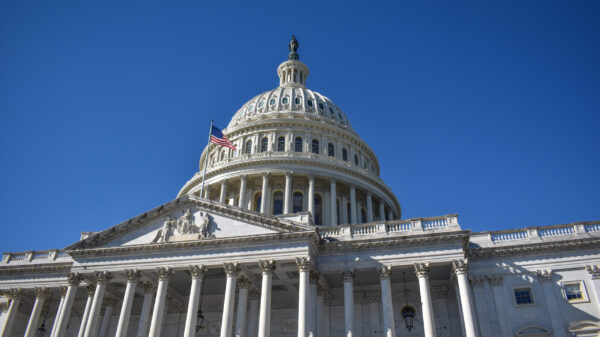By Dr. Henry C. Mabry
The proposed $800 million prison bond issue appears headed for passage in the Alabama Legislature; however, issues remain that should be considered for the near term and future. Potential savings by building new prisons should not be viewed in isolation. Needs of the overall prison system and past and present limited resources with a growing population should also be taken into account.
The annual cost for debt service is estimated by the Department of Corrections to be $50 million per year, and such debt service is to be paid with purported savings by personnel reductions, medical contract savings via economies of scale, and maintenance efficiencies. No documentation supports such claims and no plans have been in public domain to verify what has been asserted, but at least some of the cost savings are plausible if looked upon in isolation.
Is there rationale in the department’s cost savings assertions? Yes and no. Assuming personnel cost savings when the department has needed more and more personnel for decades is a specious argument. Can more efficient prison designs and automations reduce staffing needs? Yes, they can; however, the proposed $61,500 per head construction cost pales in comparison to other state estimated new prison construction costs by up to half (e.g., South Carolina). Further, by capitalizing bond payments for three years, the actual spending on design and construction will reduce the amount further to a level south of $60,000 per head.
If the goal is to actually provide innovative and less labor intensive maximum and medium prisons, then more money may actually be needed. One way to provide some extra money for the project is by seeking local government financial participation. This would not be a huge amount, but the state could be leaving tens of millions of dollars on the table if it does not consider such an approach.
If the state is to build one new 1,000 bed prison and three new 4,000 bed prisons, then where are these prisons going to be located? Like states competing for industries in economic development with tax and other financial incentives, might the State of Alabama use a similar approach and have localities bid for the new prison locations?
Under Gov. Don Siegelman’s watch we were able to get local governments, regionally and otherwise, to contribute toward the state industrial incentive packages. Such collaborative efforts resulted in over $50 million of assistance for the first Honda and second Mercedes plant. If a new prison would result in, say, 300 direct jobs paying $35,000 for a community (plus 150 indirect jobs), then that community would benefit millions of dollars in immediate and future tax receipts thanks to the construction and operation of the new prison. Or, what about the communities that may lose prisons because of relocating prisoners to the new sites? Could those communities not bid to bring the new prison to their community to replace the one to be mothballed? The state could arguably supplement its costs by getting the winning communities to contribute $40 million to $50 million to the new prison endeavor. Such approach could pay a large portion of the capitalized debt service payments which could help keep more money into the construction end of the projects.
Local governments in major cities may not be enticed to bid for inclusion (e.g., replacement of Donaldson in Jefferson County), but smaller communities hungry for new jobs or to keep existing prison jobs may bite at such possibility. Existing prisons that may be shuttered where localities may be interested in bidding come to mind regarding Bullock, Easterling, Limestone, Bibb, St. Clair, and Holman Prisons and those in Elmore County.
Corrections has consistently done well in coping with limited resources, and there is no question that many facilities are outdated and dangerous. Saying the personnel cost savings will materialize concerning the new prisons on the one hand but that will not be absorbed by other needed personnel costs has not been addressed. As it stands, Corrections personnel costs have only increased 23 percent over the past decade from $153 million to $189 million and this amount has not kept up with inflation and prison population growth. By its own admission, the Department of Corrections is only at a 65 percent staffing level concerning security. Is it realistic to think that efficiencies will reduce personnel in one area but that those personnel reductions will not result in shoring up personnel needs in another?
Two examples come to mind. In visiting Staton and Bibb Prisons (not as a resident but as a state official) over a decade ago there was the same glaring issue. At Staton, one prison guard posted in a lucite-looking guard box was in the middle of hundreds of inmates. That man deserved a medal. At Bibb, I asked why the guards did not carry weapons. The warden told me at the time, “If we carried weapons, the prisoners would take them away from us and kill us.” Weapons were kept outside the fences of the prison, and the Bibb prison was brand new at the time and at only half capacity.
This is to say that new facilities can help alleviate some of the endemic personnel shortage, but not all of it. Corrections, regardless of getting new facilities, needs more, not fewer, guards at facilities in toto.
The Corrections budget is $493 million and the prisons have historically been in need of more money. In 2003, the Corrections budget was $283 million and costs have increased 74 percent while the number of inmates has increased less than eleven percent, but the big chunk of the increased cost has come in terms of the prison medical contract. The prison medical contract, hailed as a mechanism to save money via the bond issue, has ballooned from $28 million in 2002 to over $100 million now, or a three-fold increase in just 14 year. If the increased costs for the medical contract are excluded and prison population growth is considered, then the Corrections increases have at best just kept up with inflation which is not enough for what was an inadequate system anyway.
The prison medical contract is certainly a way to save Corrections money. The department says the new prison plan is expected to save $10 million. Arguably, the state could save $30 million to $40 million in inmate medical costs, so $10 million is more than a possibility.
The prison plan assumes savings that are static within the existing system. Currently, there are just over 20,000 inmates in medium and maximum security facilities. There are 2,000 state prisoners in county jails. The new plan calls for new facilities of 13,000. In the past decade, the medium/maximum and jail populations have grown by 1,800. The overall state prisoner population has increased by roughly 3,200. The new prisons will alleviate some overcrowding; however, future growth in the maximum and medium security populations will require more, not less, space unless there is a reversal in such relative prison population growth.
The spectre of federal court intervention and large-scale prison incidents provide impetus for adding/replacing space to the existing prison system. Improving safety is reason enough to replace old prisons with new ones and adding more beds. Assuming savings of $50 million a year mainly from personnel attrition may appear realistic on the one hand; however, considering the overall needs of a prison system that is at a 65 percent current security personnel level may question whether or not there will be actual savings if other inadequate guard needs happen to be backfilled.
Further revisiting the prison health care delivery and seeking local community financial participation can provide additional avenues to provide more $40 million to $50 million in capital costs and up to $40 million in annual resources to help make the prison plan easier to manage. Looking at the overall needs of the system instead of isolating a part of the system would be a realistic approach in addressing Corrections needs.
Dr. Henry C. Mabry served as State Finance Director from 1999-2003. He currently heads Mabry & Co., and can be reached at [email protected]























































